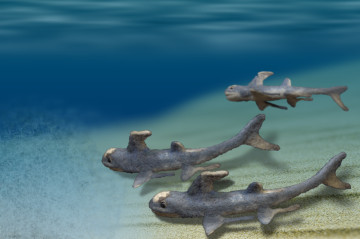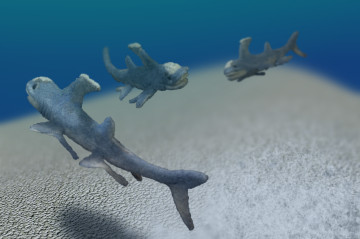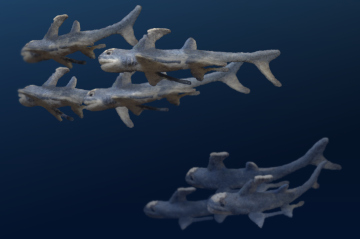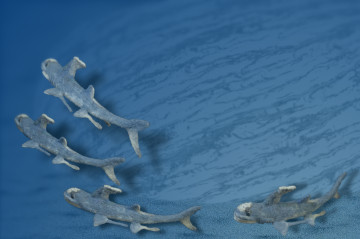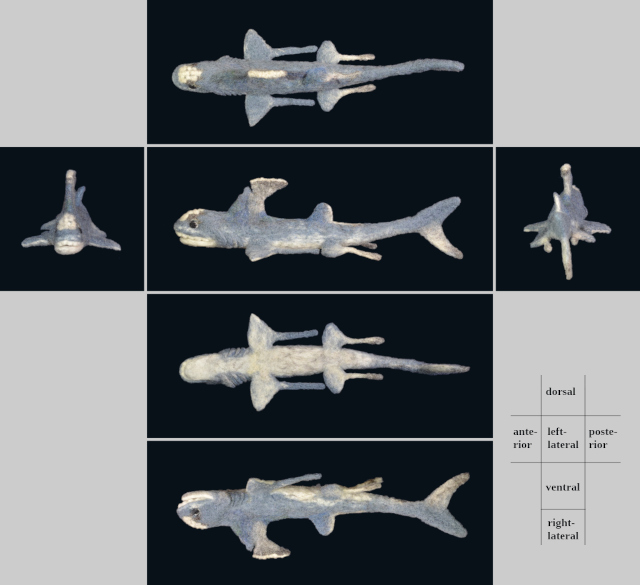Akmonistion zangerli
Akmonistion is an extinct genus of shark-like fish, which only found from the Lower Carboniferous formations. They have a so-called "spine-brush complex", an anvil-like first dorsal fin, which also has been known in the family Stethacanthidae 1).
Genus "Akmonistion" is named from the ancient Greek "akmon" for anvil, and "istion" for sail. The species "zangerli" is named after Rainer Zangerl, vertebrate paleontologist 1).
Akmonistion is about 60cm in length, and their characteristic keel-like dorsal fin, spine-brush complex, is composed from spine, basal plate and brush-like structure. The position of spine and basal plate are above the branchial region (five gill archs), while the brush is above the pectoral girdle 1).
The basal plate and spine are separated from the base of the brush complex in the specimens, but these form a single unit in life. The "brush-fibres" are not fibrous but are hollow rods consisting of globular calcified cartilage, and the apex of bush is covered with an array of prominant, crowed scales. The dorsal side of the head also has such array 1).
The eyes are relatively large.
It is suggested that the spine-brush complex and the denticles on the head was used to scare away predators, to attach to other large animals like a sharksucker, to attract a mate, or to mate, but actually the function of these structure remains obscure 1), 2).
There is a pair of whip-like pectoral fin extentions, which may used during mating. Male pelvic fin has a pair of pelvic claspers 1).
As their unique dorsal fin was unsuitable to agile quick movement, Akmonistion could not have swum fast, and might have caniborous feeding benthonic inverebrates or scavenger prowling debris of arthropods and fishes. The stomach or foregut debris of the fossil includes small fragments of arthropod and fish scales 1).
created in August - September 2018.
References :
- Coates MI, Sequeira SEK (2001) A new Stethacanthid Chondrichthyan from the lower Carboniferous of Bearsden, Scotland. J. Vert. Paleontol. 21(3):438–459. ((DOI: 10.1671/0272-4634(2001)021[0438:ANSCFT]2.0.CO;2).
- Zangeri R (1984) On the microscopic anatomy and possible function of the spine-"brush" complex of Stethacanthus (Elasmobranchii: Symmoriida). [abstract] J. Vert. Paleontol. 4(3):372-378. (DOI:10.1080/02724634.1984.10012016

